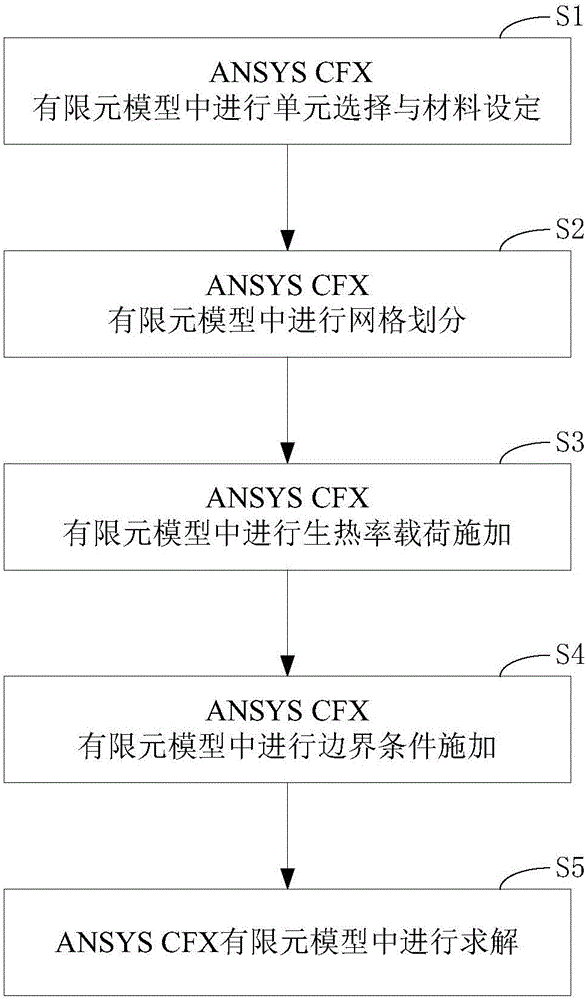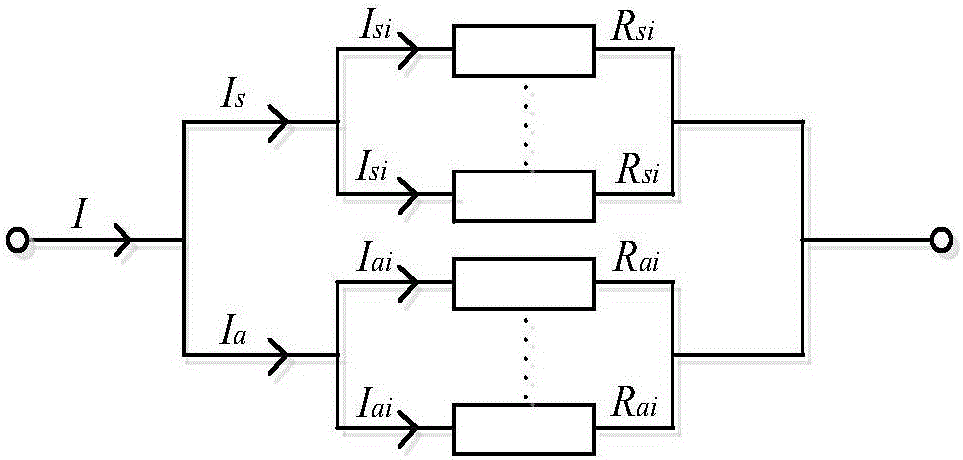ANSYS CFX-based simulation method for radial temperature field of overhead line
A simulation method and radial temperature technology, which are applied in design optimization/simulation, special data processing applications, instruments, etc., can solve the problems of not considering the influence of radial heat transfer of conductors, unfavorable 3D sag model establishment, etc. The effect of fast calculation speed
- Summary
- Abstract
- Description
- Claims
- Application Information
AI Technical Summary
Problems solved by technology
Method used
Image
Examples
Embodiment 1
[0048] See figure 1 , figure 1 It is a flow chart of an ANSYS CFX-based simulation method for the radial temperature field of overhead wires disclosed in the present invention. figure 1 An overhead line radial temperature field simulation method based on ANSYS CFX is shown, which specifically includes the following steps:
[0049] S1. Element selection and material setting in the ANSYS CFX finite element model;
[0050] In a specific application, the step S1 is specifically:
[0051] Build the model according to the actual physical structure of the steel-cored aluminum strand. When setting the material, the steel core, aluminum core and air use the corresponding materials in the ANSYS CFX model material library. The core and aluminum core are solved as a solid domain, and the remaining air is solved as a fluid domain.
[0052] S2. Grid division in ANSYS CFX finite element model;
[0053] In a specific application, the step S2 is specifically:
[0054] When dividing the g...
Embodiment 2
[0082] The model used in this embodiment is the LGJ 300 / 40 type wire, which is simulated in combination with an ANSYSCFX-based overhead wire radial temperature field simulation method disclosed in the present invention, and the specific steps are as follows:
[0083] S1. Element selection and material setting in the ANSYS CFX finite element model;
[0084] The LGJ 300 / 40 type wire is selected, and its 2D cross-sectional view is composed of four layers. From the inside to the outside, it is a steel core with a center radius of 1.33mm, and the center of the circle is evenly distributed on a circle with a radius of 2.66mm. Six steel cores of 1.33mm, the centers of which are evenly distributed on a circle with a radius of 5.985mm Nine aluminum cores with a radius of 1.995mm, and the centers of which are evenly distributed on a circle with a radius of 9.975mm aluminum core. On the basis of the existing wire model, an air layer with a radius of 0.2 meters is added outside. Since A...
PUM
| Property | Measurement | Unit |
|---|---|---|
| Radius | aaaaa | aaaaa |
Abstract
Description
Claims
Application Information
 Login to View More
Login to View More - R&D
- Intellectual Property
- Life Sciences
- Materials
- Tech Scout
- Unparalleled Data Quality
- Higher Quality Content
- 60% Fewer Hallucinations
Browse by: Latest US Patents, China's latest patents, Technical Efficacy Thesaurus, Application Domain, Technology Topic, Popular Technical Reports.
© 2025 PatSnap. All rights reserved.Legal|Privacy policy|Modern Slavery Act Transparency Statement|Sitemap|About US| Contact US: help@patsnap.com



